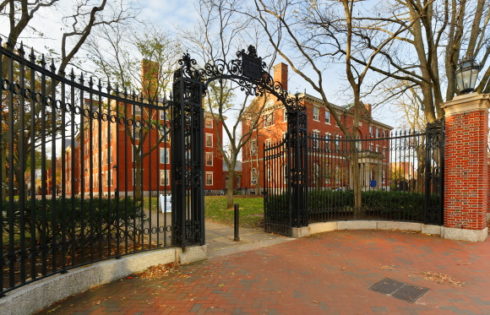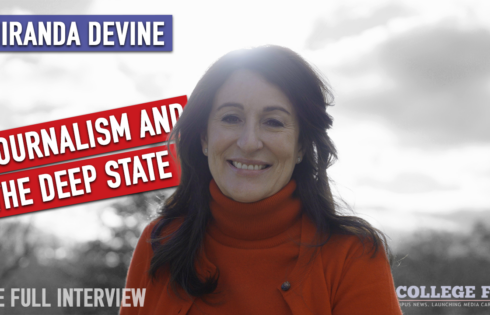
Agrees that race-neutral alternatives are ‘unworkable’ and would harm academic standards
Harvard University does not discriminate against Asian-American applicants based on their race, a federal appeals court ruled Thursday.
How did it reach that conclusion? By taking the word of Harvard admissions officers.
The 104-page ruling uncritically accepted testimony by the people deciding whom to admit and Harvard’s explanation that its race-conscious admissions policies are necessary to achieve its institutional goals, including training students to become leaders in a “pluralistic society.”
The 1st U.S. Circuit Court of Appeals repeatedly turned Students for Fair Admissions’ evidence against the plaintiff. In one section, the opinion claimed the Supreme Court upheld even stronger uses of race in admissions than Harvard’s in a previous affirmative action case.
The “personal rating” system flagged by SFFA, under which Asian-American applicants received much lower scores than other racial groups, has also been exaggerated as a source of alleged discrimination, according to the opinion.
“There is a clear and important distinction between race being correlated with the personal rating and race influencing the personal rating,” it said, agreeing with Harvard’s expert witness that “non-quantifiable aspects of an applicant’s personal essay” could contribute to that correlation.
Upholding every finding by U.S. District Judge Allison Burroughs a year ago, the 1st Circuit said Harvard can’t switch out its race-conscious system with the “unworkable” race-neutral alternatives proffered by SFFA. They would harm its high academic standards while making campus less “hospitable” to some minority applicants.
Even the “most academically promising” racial minorities have difficulty getting into Harvard, the judges said: SFFA’s own evidence shows it rejects more than two-thirds of Hispanics and just under half of African Americans in the top 10 percent of applicants, academically speaking.
The opinion is only signed by two panel members who heard arguments, Chief Judge Jeffrey Howard and Judge Sandra Lynch, because the third member, Judge Juan Torruella, passed away before it was written.
MORE: Judge Lynch dooms accused student athlete’s pro career
Both parties expect the Supreme Court to strongly consider taking the case, they told The Boston Globe.
“This lawsuit is now on track to go up to the US Supreme Court, where we will ask the justices to end these unfair and unconstitutional race-based admissions policies at Harvard and all colleges and universities,” SFFA President Edward Blum said. (His group was only affirmed once by the appeals court, which agreed it had associational standing to sue Harvard.)
Harvard considers race “alongside many other factors” so it can create “a student body that enriches the education of every student,” Harvard President Lawrence Bacow said. “We will continue to defend these principles and our admissions process all the way to the Supreme Court, if necessary.”
Legal experts also expect the high court to intervene.
“The Supreme Court is going to change the law on affirmative action” because of President Trump’s confirmed judges, said Erwin Chemerinsky, dean of the University of California-Berkeley law school. Indiana University Law Prof. Kevin Brown said: “If I were proponent of affirmative action, I would be very nervous.”
Accuses Justice Department of being ‘insensitive’ to Harvard’s mission
Harvard didn’t dispute that it considered race throughout the admissions process, including “when assigning an overall rating” and discussions in its admissions subcommittees.
Its handbook for admissions officers and alumni interviewers includes race as a “tip factor” alongside “outstanding and unusual intellectual ability” and “unusually appealing personal qualities.”
The university did change some procedures after SFFA sued, but the flip-flop didn’t matter to the 1st Circuit, which portrayed Harvard as attentive to regularly reviewing its admissions criteria to ensure it wasn’t leaning too heavily on race.
“Before 2018, the reading procedures Harvard distributed to its admissions officers did not mention whether race should be included in assigning the personal rating” that SFFA considers a red flag, but now they explicitly prohibit consideration of “an applicant’s race or ethnicity,” the panel said.
Personal-rating descriptions are also more detailed since SFFA sued. Students who “may display enormous courage in the face of seemingly insurmountable obstacles in life” should get a top rating, for example.
MORE: Asian-American students promote stereotypes by challenging Harvard?
This is not evidence of guilt, however, because the evidence shows “Harvard has periodically reviewed its use of race in the past, has periodically and recently considered race-neutral alternatives, and has made it clear that it will continue to do so in the future,” the opinion said.
Regardless of Justice Sandra Day O’Connor’s unofficial deadline of 2028 for universities to phase out racial preferences, Harvard can continue using race in admissions as long as it wants, according to the 1st Circuit.
Both SFFA and the Justice Department cited this 25-year line from the 2003 Grutter decision, which annoyed the judges. They called the phase-out argument “insensitive to the achievement of the university’s legitimate goals once it has met the requirements established by the Supreme Court.”
Harvard has to scrutinize the “racial makeup of its admitted class” at least because of documented differences in “yield rate” between racial and ethnic groups: Whites and Asians accept admissions offers at higher rates than blacks, Hispanics and others. Yield rates are also important because Harvard is a “residential college with a limited number of beds.”
Judges also weren’t convinced that higher admissions rates should follow higher admissions scores, as SFFA argued. “It is not uncommon for students with worse ratings” across Harvard’s six admissions criteria “to be admitted over students with better ratings.”
They agreed with the trial judge that the disparity between Asian-American academic performance and their admission rates likely “undervalues other less quantifiable qualities and characteristics that are valued by Harvard and important to the admissions process.”
Legitimate reasons for favoring well-off applicants
The appeals court leaned heavily on Harvard’s occasional introspection on what role diversity should play in admissions to determine that its interest was not “simple ethnic diversity” as reflected in a de facto quota.
The so-called Khurana report, named after the dean of Harvard College, concluded in 2015 that race-conscious admission was integral to “training future leaders in the public and private sectors,” as required by Harvard’s mission statement.
It equips graduates “and Harvard itself to adapt to an increasingly pluralistic society,” better educates them “through diversity,” and produces “new knowledge stemming from diverse outlooks.” The university claimed it wasn’t treating race “monolithically” because it didn’t treat students of the same race as having “the same views, experiences, or other characteristics.”
The university’s first stab at a committee for race-neutral alternatives in 2014 didn’t even last a year. Its second, 2017’s so-called Smith Committee, rejected SFFA’s race-neutral proposals to replace its process.
Harvard is already doing much of what SFFA recommends, and doing more won’t help, it claimed: 90 percent of families of students are paying functionally the same as they would at a state school, and the vast majority of black and Hispanic families qualify for “zero parental contribution” to their child’s tuition.
MORE: Bombshell docs reveal Harvard discrimination tactics
It can’t boost its percentage of admitted transfer students – another indirect way to boost racial minorities – because they are “less diverse and less impressive than the pool of freshman applicants,” the university argued.
The judges note the classist argument Harvard previously made in court: that increasing the prominence of socioeconomic considerations in admissions would mean admitting “substantially fewer students with the highest academic, extracurricular, personal, and athletic ratings.”
But the 1st Circuit upheld this preference for well-off students, saying it produces “academic excellence” that serves Harvard’s “institutional imperative.” It also justified Harvard’s “tip factors” for athletes, legacy students, children of faculty and donor-recommended applicants, whose financial and intangible value (“sense of community”) to Harvard would be lost under race-neutral alternatives.
“Harvard has identified specific, measurable goals it seeks to achieve by considering race in admissions,” the opinion said: “These goals are more precise and open to judicial scrutiny than the ones articulated by the University of Texas and approved by” the Supreme Court in a 2016 ruling. (UT responded to the win by increasing its reliance on race in admissions, SFFA claimed in a new lawsuit this summer.)
Fluctuation in Asian-American admissions is not ‘racial balancing’
While the appeals court accepted the trial judge’s findings on the hit to racial minorities if Harvard stopped considering race, it tore apart SFFA’s numbers on Asian-American representation.
The 1st Circuit even mocked the plaintiff in a footnote for not explaining how “Harvard’s use of race to benefit African American and Hispanic applicants” is related to its central claim that Harvard prefers whites over Asian-American applicants.
Judge Burroughs had found “at least” 10 percent of Harvard’s class would disappear without race-conscious admissions, and that “race is a determinative tip for approximately 45% of all admitted African American and
Hispanic students.”
SFFA chose 2009-2018 as its relevant admissions range, in which “the percentage of [Harvard’s] class by race always fell within a narrow range.” The share of Asian Americans was always within 3 percentage points.
It also noted an admissions officer said the university uses “one-pagers” (demographic summaries) to prevent “a dramatic drop-off” in any given racial group’s admission rate from the previous year.
The appeals court looked back 30 years earlier, however, noting Asian Americans were under 4 percent of admissions in 1980. Their percentage of applicants in the entire Harvard pool, meanwhile, “co-varies almost perfectly” with their share of admissions over decades.
MORE: Harvard mad at Trump administration for calling it ‘evil,’ racist
It’s hard to see a surreptitious quota system in the numbers because “the share of admitted Asian American applicants fluctuates” to a greater degree than the fluctuation in the share of Asian Americans in the applicant pool, the judges wrote: “This is also true for Hispanic and African American applicants,” and it’s strong evidence against illegal “racial balancing.”
The “one-pagers” that SFFA called a thumb on the racial scale are not much different from the “daily reports” that the Supreme Court approved in Grutter, the opinion said. “[U]niversities must use data to consistently evaluate if race-conscious programs are necessary,” and Harvard uses one-pagers for “narrow tailoring” – the constitutional requirement for race-conscious admissions.
The appeals court flatly said Harvard can set “minimum goals for minority enrollment” to avoid the feared “drop-offs in admitted students with certain characteristics.”
This is not an illegal “mechanical plus factor” where it gives a “pre-defined boost” and ignores “individualized consideration,” as happened in a struck-down University of Michigan program (Gratz) that gave a 20-point bonus for every underrepresented minority applicant.
“Gratz precludes programs where race is decisive for minimally qualified candidates. Harvard’s admissions process is so competitive that race is not decisive for highly qualified candidates,” the panel wrote.
Must not increase ‘feelings of isolation and alienation’
The Justice Department is exaggerating the harm to Asian-American applicants in its brief, the 1st Circuit claimed.
While the government’s calculations are correct – Harvard’s race-conscious admissions impose an 11 percent “penalty” on Asian Americans, and boost African Americans by 133 percent – this is not substantially different from the program approved in Grutter, the panel wrote in a footnote.
SFFA likewise is downplaying the staggering effects of its race-neutral alternatives, known as “Simulation D.” SAT scores would drop, accepted applicants with top scores would plunge more than 10 percent, and an enhanced socioeconomic “tip” would harm “almost every dimension important” to Harvard admissions.
MORE: Harvard discriminates by race to keep its standards high, dean testifies
Not only would humanities applicants drop 14 percent, but African Americans would plunge by 32 percent under SFFA’s own scenario. Harvard reasonably wants to keep “diversity from plummeting,” the panel said: Judge Burroughs found SFFA’s alternatives could “increase feelings of isolation and alienation among Harvard’s students,” a measure specifically upheld by the high court in Grutter.
“Supreme Court precedent makes clear that the fact that Harvard’s application process is subjective,” which SFFA faults, “is insufficient to overcome other evidence in the record that Harvard is not biased against Asian Americans and does not stereotype them,” the judges wrote.
Simply calling some Asian-American applicants “quiet,” “flat” and “shy” in personal ratings is “truthful and accurate rather than reflective of impermissible stereotyping.”
Effect of teacher and guidance counselor recommendations
One of the biggest disputes between the parties was whose statistical model to use, and the 1st Circuit sided with Harvard’s.
SFFA’s expert Peter Arcidiacono said he excluded the personal rating from his “logistic regression model” that judges potential discrimination because it’s “tainted” with anti-Asian bias. His decision was backed by economists and econometric scholars including Brown University’s Glenn Loury.
Harvard’s expert David Card included the personal rating in his model on the theory that it was only “correlated” with race, and that excluding it “would introduce omitted variable bias into the model,” the panel wrote.
Card offered evidence that Asian-American applicants get “lower teacher and guidance counselor recommendation ratings than white applicants,” which factor “heavily” in the personal ratings. If this is true and “not controlled for” in SFFA’s model, “this calls into question SFFA’s contention that race influences (and is not just correlated with) the personal rating,” the opinion said.
Judges noted one of the friend-of-the-court briefs claimed Asian Americans are more likely than whites to “attend public high schools where overloaded teachers and guidance counselors may provide more perfunctory recommendations.” Hence, they lack the “privilege” of whites, and their personal ratings reflect that lack of privilege rather than their race.
The panel also rejected SFFA’s finding that an Asian-American student has a “statistically significant” 0.34 percent lower chance of admission than a similarly situated white student.
Because the “average marginal effect is calculated using all applicants to Harvard, including many applicants whom Harvard is unlikely to admit,” the opinion said, “this number does not establish that being Asian American matters for the small subset of applicants who have a realistic chance of being admitted to Harvard.”
MORE: Economists approve SFFA’s statistical model
IMAGE: Ranta Images/Shutterstock
Like The College Fix on Facebook / Follow us on Twitter






Please join the conversation about our stories on Facebook, Twitter, Instagram, Reddit, MeWe, Rumble, Gab, Minds and Gettr.